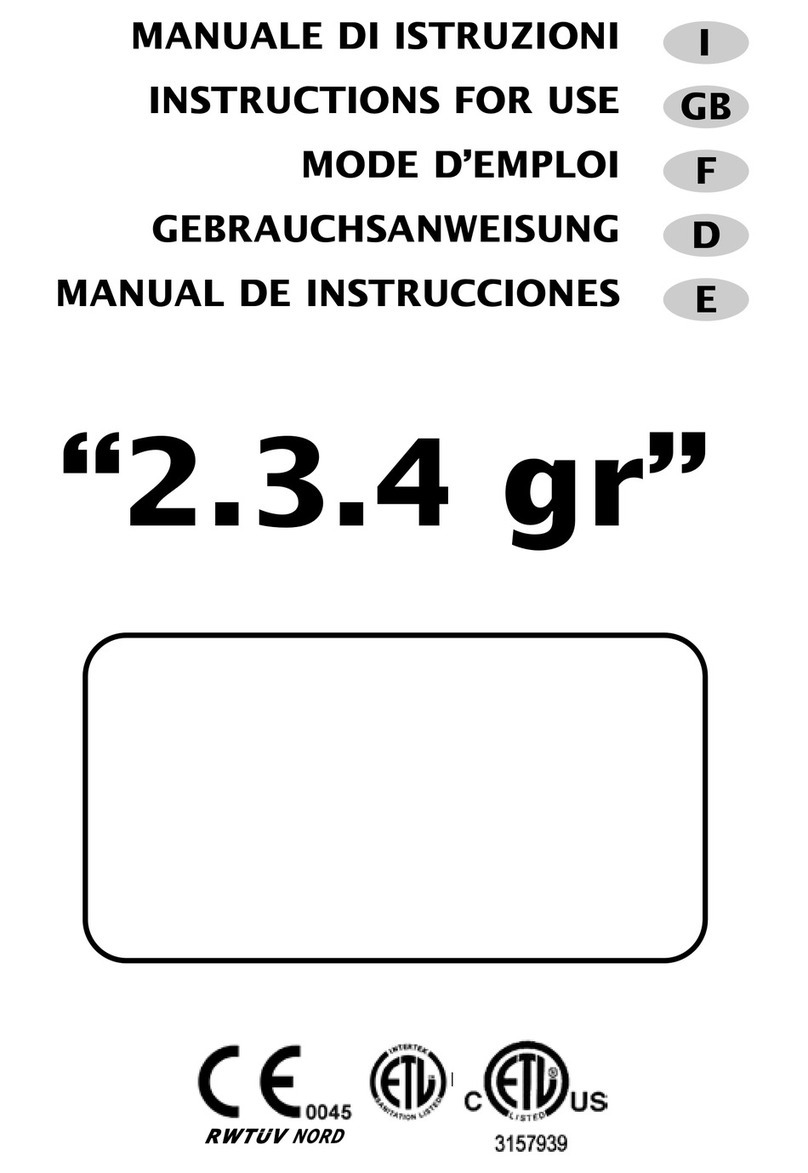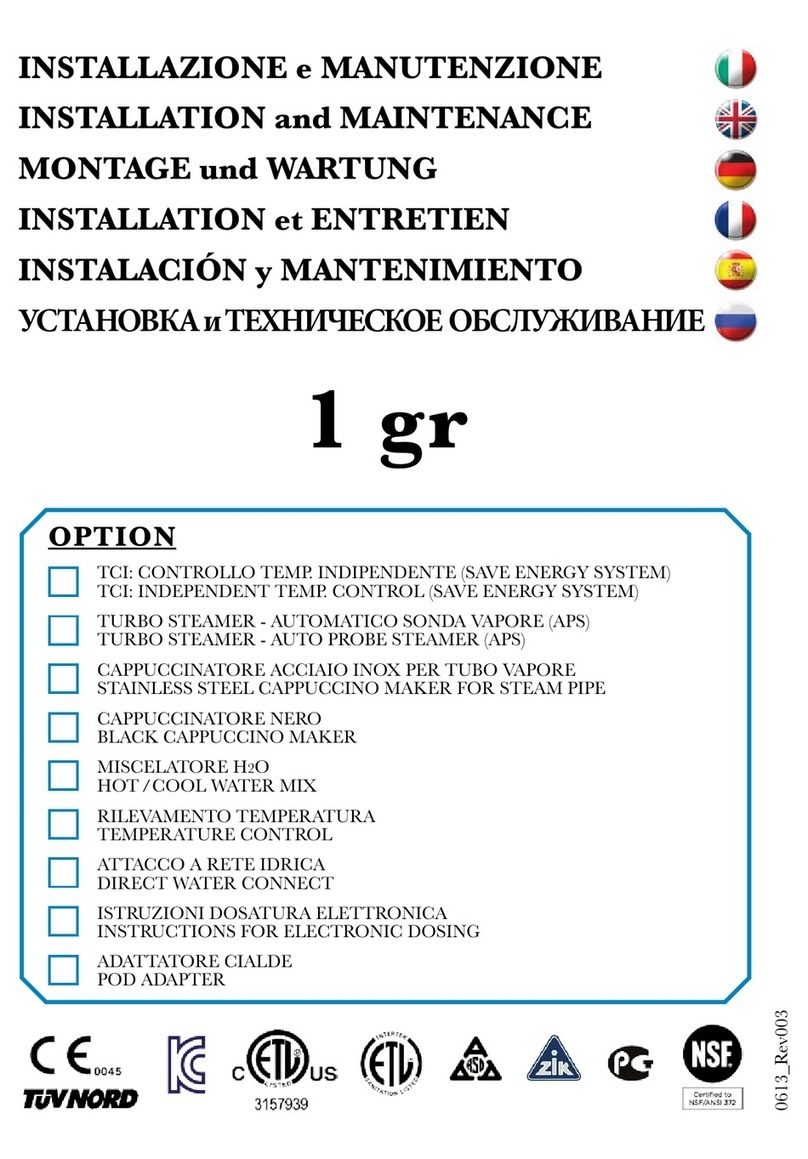
3. PRESENTAZIONE
Questo libretto costituisce una guida rapida e semplice alla manutenzione ed uso delle macchine per
caffè. Leggere attentamente quanto riportato nelle sezioni che compongono questo manuale.
La ditta assicura, nel caso vi fossero problemi e mal funzionamenti, la sua più ampia collaborazione
tramite i suoi centri assistenza.
Fate controllare almeno una volta all’anno la Vostra macchina per caffè da personale
qualicato. Questa costante attenzione, renderà la macchina più efciente e sicura.
Le macchine sono state progettate e costruite nel rispetto di tutte le caratteristiche che contraddistin-
guono le tradizionali macchine per caffè espresso da bar: materiali nobili quali rame e acciaio e com-
ponenti afdabili, rendono le macchine costruite dalla ditta, sicure, afdabili e funzionali.
L’eventuale diverso utilizzo non contemplato nelle riportate istruzioni, solleva la ditta da qualsiasi
responsabilità per eventuali danni a persone o cose.
4. INSTALLAZIONE
1) Togliere l’imballo esterno, vericando immediatamente l’integrità e che non abbia subito danni.
2) Posizionare l’apparecchio sopra un tavolo o bancone robusto ed in piano, vicino ai punti di collega-
mento elettrico ed idraulico. Regolare i piedini per mettere “in bolla” l’apparecchio.
Accertarsi che la tensione della rete elettrica corrisponda a quella indicata nelle caratteristiche tecniche.
3) Togliere la vaschetta anteriore e collegare, tramite tuboex in dotazione (3/8”), il raccordo di carico
della macchina al depuratore (usare solo tubi omologati per acqua potabile secondo D.M. 21.03.73 e
successivi emendamenti). Collegare il tubo di scarico ssandolo alla vaschetta in plastica (di scarico)
(Foto 1). Inne mettere l’addolcitore in fase di lavoro e vericare che non ci siano delle perdite.
(Attenersi alle regole emanate dagli enti preposti di ogni singolo stato, regione, contea).
4) L’installazione elettrica della macchina deve essere eseguita esclusivamente da personale quali-
cato, secondo le prescrizioni del presente manuale ed in accordo con la normativa di installazione
vigente nel paese di destinazione. La macchina viene fornita di prassi con cavo di alimentazione tipo
H07RN-F 5x2,5 mm2di lunghezza 2,5 m opportunamente testato al quale l’installatore deve prov-
vedere a collegare una spina industriale 3P+N+PE 16A - 400V omologata EN 60309 (non fornita).
In caso di richiesta del cliente o normative differenti da quelle italiane, la macchina potrebbe essere
fornita con cavo di alimentazione differente.
In alternativa l’installatore può collegare il cavo ad un interruttore di manovra e protezione onnipolare
le cui caratteristiche le deve ricercare in funzione dell’impianto elettrico utilizzatore e della norma im-
pianti vigente nel paese di destinazione e alla IEC 60364-1. Prima della messa in funzione, l’installa-
tore deve vericare che la macchina sia stata collegata correttamente all’impianto elettrico utilizzatore
e all’impianto di terra, vericando l’efcienza della protezione dai contatti indiretti secondo la IEC
60364-1. È VIETATO UTILIZZARE LA MACCHINA IN ASSENZA DI UN EFFICACE E
SICURO COLLEGAMENTO A TERRA.
2
A: Carico acqua in caldaia
B: Tubo di scarico
Leggere attentamente quanto descritto sopra.





























